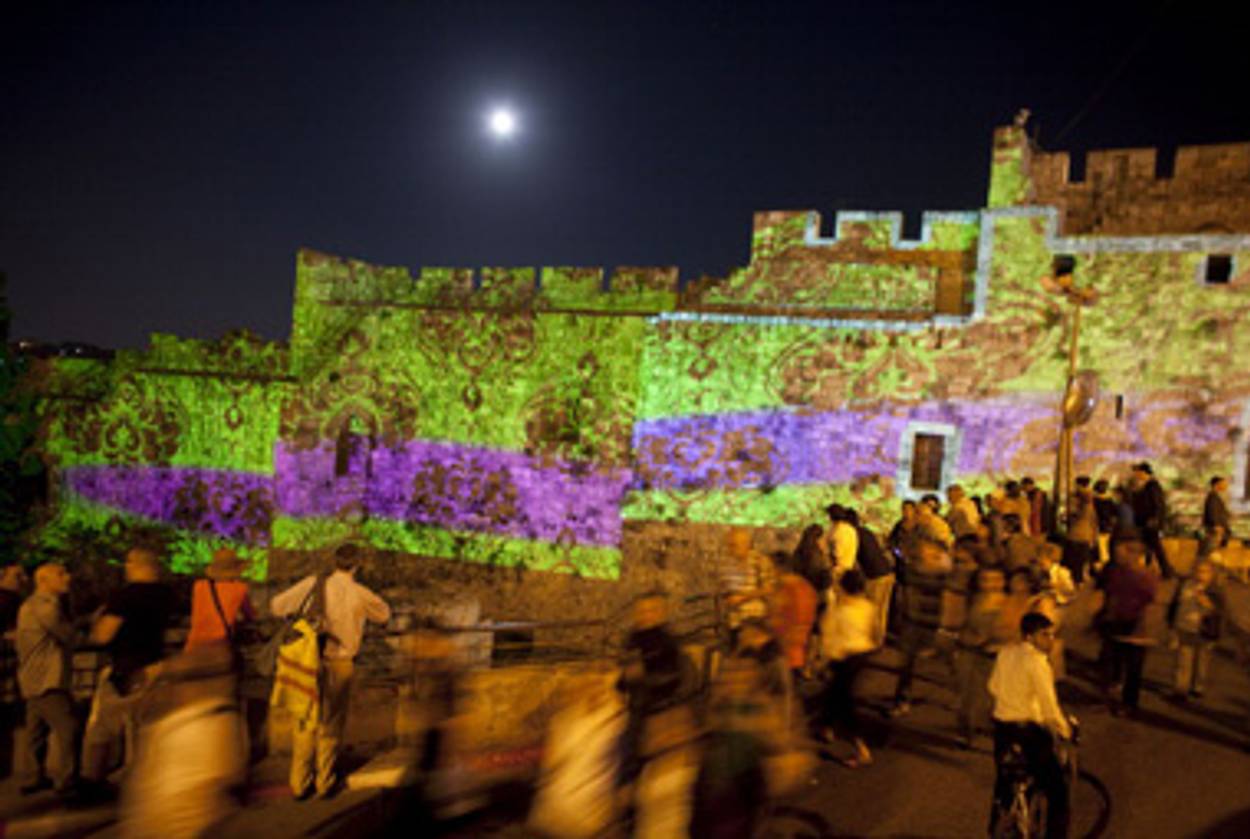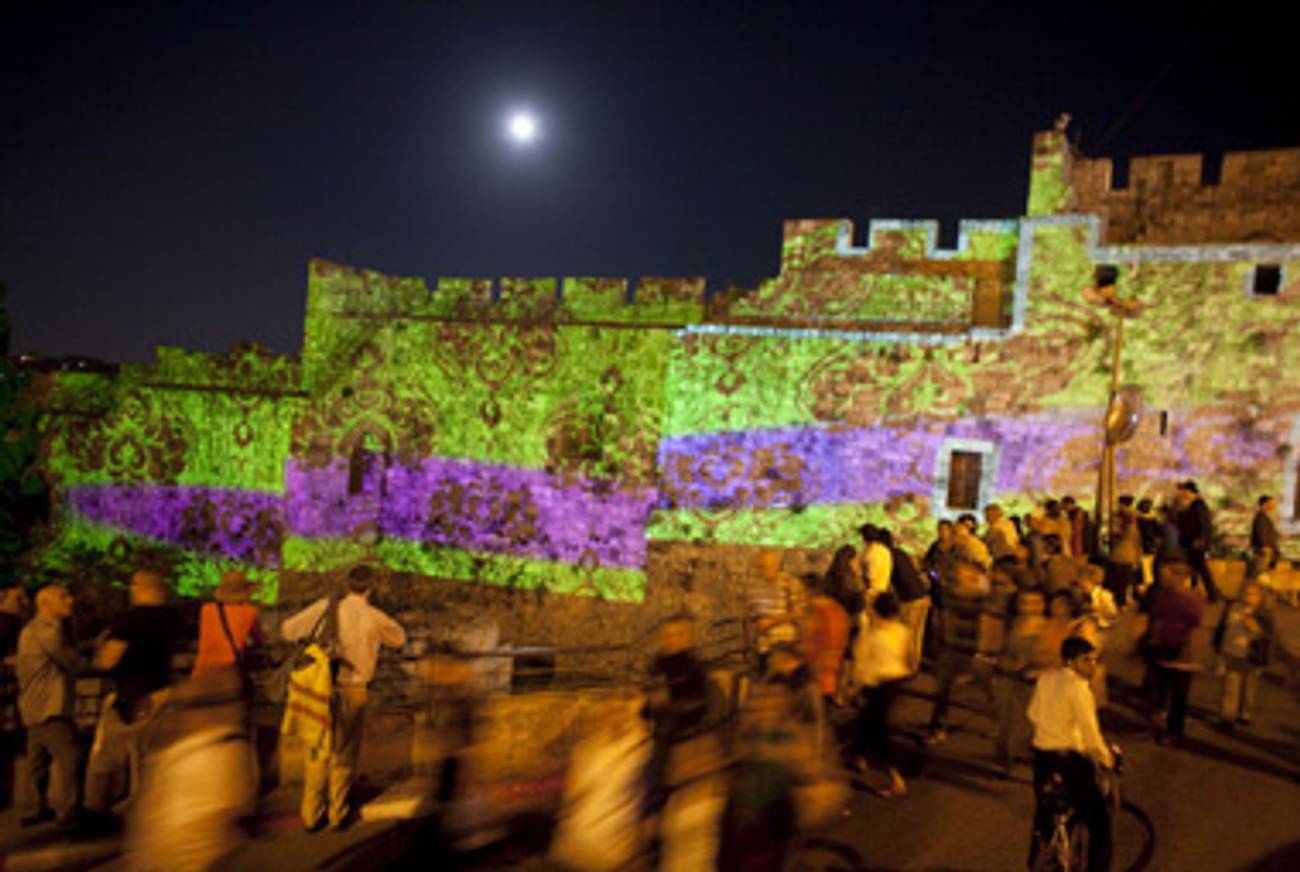Culture City
Jerusalem—an ancient capital burdened by violence, economic hardship, and shifting demographics—may very well depend on a modern cultural renaissance for its survival




My first trip to Jerusalem was in the 1970s. The city, newly reunited, was still raw but bursting with promise. Teddy Kollek, its progressive and secular mayor, shrewdly grasped that culture could be a powerful instrument for both social integration and economic growth, and he established the Jerusalem Foundation to raise cash for the arts. Old landmarks were dusted off and retooled to accommodate waves of tourists, and new cultural institutions sprang up, making the city a draw for artists and intellectuals.
Today the city’s early promise has dimmed, thwarted by subsequent administrations with a vastly different agenda than Kollek’s, the devastating economic impact of two Intifadas, in which half of all attacks took place in Jerusalem, and, significantly, a shifting demographic. As Jerusalem’s population becomes increasingly ultra-Orthodox, its secular residents have been steadily decamping to Tel Aviv in search of a more urbane lifestyle and a political discourse that sizzles rather than boils.
And as the city’s rapidly reproducing ultra-Orthodox population expands, poverty rates have been creeping up: The unemployment rate among ultra-Orthodox men currently hovers close to 70 percent, placing an untenable burden on the city’s welfare services. To maintain and shore up its revenue base, Jerusalem must attract and hold onto its secular residents.
Pumping up the arts, then, is not a frivolous concession to a gentrified class, but very much a matter of urban survival. Eyal Sher, current director of the Jerusalem Foundation, called it “a burning issue,” and pointed to cities like Berlin and Edinburgh that have successfully leveraged the arts into a stimulus package.
The launch last month of a new American Academy in Jerusalem— molded along the lines of similar institutions in Rome and Berlin and dedicated to inviting artists and intellectuals for short residencies—is the latest attempt to harness the ancient mystique of this city as a way of realizing the cultural promise it held in Kollek’s day and as a fillip to its struggling economy.
The American Academy is the brainchild of New York’s Foundation for Jewish Culture and its president, Elise M. Bernhardt, an impassioned advocate of using the arts to revitalize troubled urban landscapes. (I have previously received a grant from the foundation.) But Jerusalem’s a political flashpoint, and after one of the candidates for the fellowship dropped out just days before the academy’s inaugural press conference—citing personal reasons but admitting to having been dissuaded by the boycott, divestment, and sanctions movement—Bernhardt observed that “this city is the ultimate test.”
As the Academy’s four fellows—urban planner David Karnovsky, visual artist Lynne Avadenka, theater director David Herskovits, and choreographer Donald Byrd—head to Jerusalem in October, they’ll be looking to ignite a creative spark with the city’s diffuse arts community.
Herskovits, for example, the founding artistic director of New York’s Target Margin Theater, will be spending part of his residency in Jerusalem exploring the roots of avant-garde Yiddish theater with Hazira, a local fringe performing arts troupe. Guy Biran, Hazira’s director, said Jerusalem was the ideal laboratory for such collaborations, because it “reflects all the conflicts on earth: religious, political, personal, which is what theater is about.”
The Academy’s three other fellows will be equally embraced by the local arts scene: Avadenka will develop a print series inspired by the story of Joseph in biblical and Koranic texts at the Jerusalem Print Workshop, and Byrd will work with Arab and Jewish dancers to choreograph a performance based on the writings of the Israeli novelist Amos Oz. In a nod to the centrality of urban planning to any revitalization effort, Karnovsky will consult with Israeli and Palestinian planners and arts groups on re-envisioning Jerusalem as a more habitable city for all its residents.
While working on their own projects, all the American Academy fellows will also be mentoring students in Jerusalem, where some of Israel’s best and most distinguished arts academies are located, including the Bezalel Academy of Arts and Design and the Sam Spiegel Film and Television school. This is significant: Culture, like Israel’s high-tech sector, is emerging as a thriving industry in Israel.
Heartened by their country’s competitive showings in festivals from Cannes to the Venice Biennale, young Israelis finishing their army service are increasingly choosing to study the arts. The Jerusalem Foundation’s Eyal Sher observed that if there are no career-track jobs waiting for them in Jerusalem, or venues to showcase their work, then the steady drain of brains and talent to Tel Aviv will continue unabated.
It was no surprise, then, that Beverly Barkat, a painter and the wife of Jerusalem’s mayor, Nir Barkat, participated in the American Academy’s introductory meeting in Jerusalem a few weeks ago. Her husband’s administration has also championed another recent initiative, the Jerusalem Season of Culture, an annual summer showcase of Jerusalem’s contemporary cultural highlights, funded by the American Schusterman Foundation in Israel.
But, then, the most ambitious previous effort to revitalize culture in Jerusalem did not bloom as hoped and represents a cautionary tale of sorts. The popular Hama’abada (The Lab), launched in 2003 by entrepreneur Erel Margalit, provided fellowships and a performance space for young Israelis to create, develop, and perform their work, and quickly sparked an international buzz. Margalit expected to lure other investors, but it proved to be a hard sell, and today the Lab is being taken over by the for-profit Zappa franchise and turned into a dinner and music club.
But however sobering the political and financial hurdles, Jerusalem’s greatest resource is spiritual: Its ethnic mosaic and spirited, richly varied communities have always distinguished it from Tel Aviv—a uniquely homogeneous, secular Mecca that Israeli writer Meir Shalev has described as “one of the three foreign countries” he most enjoys visiting.
One, after all, could just as easily place an American Academy in Tel Aviv, the country’s business and arts center, but it could never lead to opportunities such as the one currently presented to Donald Byrd: When he arrives in Jerusalem in October, the renowned choreographer will be introduced to Ka’et, an all-male ultra-Orthodox dance troupe that attracted considerable attention at the Lab last fall when it danced in front of a mixed audience of male, female, Orthodox, and secular dance buffs. Reviewing that performance, the New York Times lauded the dance as a “spare yet emotionally rich work that takes gestures from daily prayer movements … and gently shifts and reframes [them] as postmodern dance.” That’s the kind of creative synergy that can only be triggered in Jerusalem.
Toby Perl Freilich is a freelance filmmaker in New York and Jerusalem currently completing a documentary about Israel’s kibbutz movement.
Toby Perl Freilich’s most recent documentary isInventing Our Life: The Kibbutz Experiment. She is currently co-directing a film about the late U.S. Senator Daniel Patrick Moynihan.